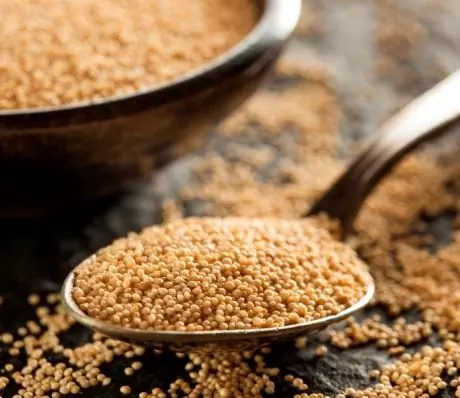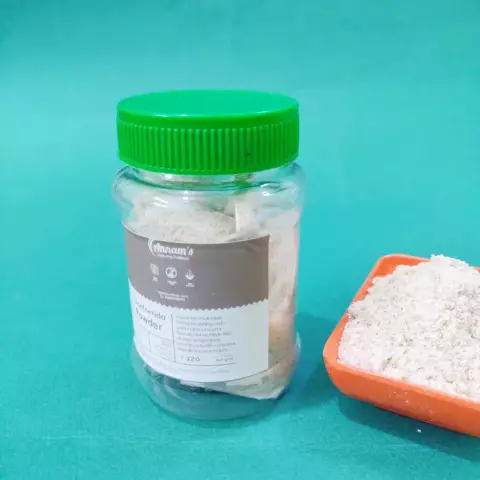- Author Rachel Wainwright [email protected].
- Public 2023-12-15 07:39.
- Last modified 2025-11-02 20:14.
Vodyanik
Crowberry is a plant from the heather family. Other names for crowberry are shiksha, crow. She chooses bright places to grow, she can be found in the tundra, rock crevices, in pine forests and in swamps. Crowberry grows well on acidic soils.

The Latin name of the plant is translated as "on a stone", which sufficiently reflects the conditions of its life. According to another theory, it got its name from the crowberry due to the fact that it has pronounced diuretic properties. In its ability to enhance the formation of urine, its effect is comparable to the pulp of a watermelon.
Externally, the crowberry plant looks like a low-growing creeping bush, the length of the stems of which sometimes reaches 1 meter. The surface of the twigs is covered with white or amber pinpoint glands. Shoots are dark brown in color, highly branched and densely covered with small leaves. The leaves are narrow, elongated, up to 10 mm long, their edges are twisted downward, which makes them look like spruce needles. The leaves stay on the branch for at least 5 years, and the life expectancy of the plant itself is up to 100 years.
Crowberry flowers are inconspicuous, small, with pink or red petals; they appear in April - May. The dropsy grows in small glades - curtains. She lives in symbiosis with mushrooms, receiving from them a number of minerals, and in return giving away products formed in the process of photosynthesis.
Crowberry bears fruit in August with black or red berries with tough skin and seeds. Outside, they are covered with a bluish bloom and are a bit like blueberries. The juice inside the crowberry is purple and very watery. Due to the low content of sugars and acids, it tastes bland, which is also reflected in the name of the berry. The fruits overwinter on the branches of the plant and remain on the shoots until spring.
Crowberry application
In the North, crowberry is widely used in food, soaked or fresh, adding it to milk. In cooking, she found application in the manufacture of wine, drinks, jam, seasoning for fish dishes. Crowberry berries are a must-have for tolokushi, a traditional northern dish made from minced fish and seal oil. For storage for the winter, the crowberry is soaked in barrels, where it is stored for a long time due to the presence of benzoic acid in the berries. Also, the fruits retain their beneficial properties well when frozen.
In the old days, a dye for wool was obtained from the berries of this plant. Crowberry juice contains a pigment called anthocyanin, which gives a persistent red color to the fabric.
Decorative varieties of crowberry have been developed, which are successfully used in the design of alpine slides. Vodyanika black has long been domesticated and bred for the purpose of obtaining fruits. Propagated by seeds and cuttings.
Useful properties of crowberry
Crowberry contains tannins, flavonoids, saponins, alkaloids, coumarins, resins, essential and fatty oils, and a number of vitamins.
Vodyanika has long been used for medicinal purposes, both berries and vegetative shoots with leaves. It improves metabolism, is used for general fatigue, headaches. Due to the high content of vitamin C, crowberry strengthens the immune system, helps to fight infectious and colds, and prevents the symptoms of hypovitaminosis C.

The infusion of twigs has a wound-healing effect in case of abrasions, scratches and cuts. This remedy is especially popular among the peoples of the North. A decoction of Crowberry roots is sometimes used in the treatment of eye diseases.
The healing properties of crowberry are used in the treatment of diseases of the liver and kidneys, the nervous system (especially with epilepsy and paralysis), and the gastrointestinal tract. Crowberry helps well with edema, as its berries and herbs have a diuretic effect.
For cosmetic purposes, a decoction of the leaves of crowberry is used to strengthen the hair. Crowberry baths are used for diseases of the peripheral nervous system.
Caution in the use of crowberry berries is required only in case of its individual intolerance.
YouTube video related to the article:
Found a mistake in the text? Select it and press Ctrl + Enter.






